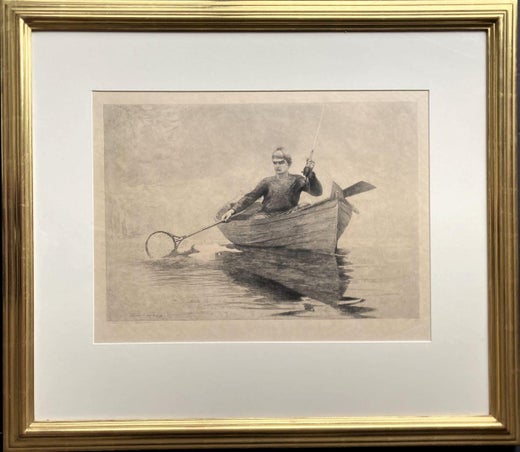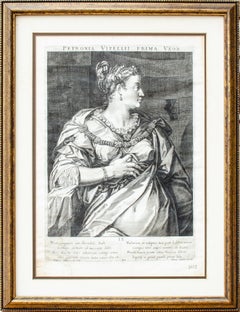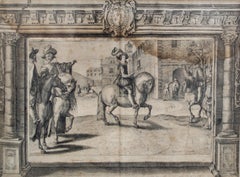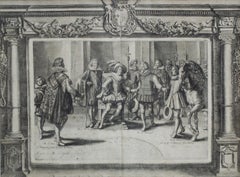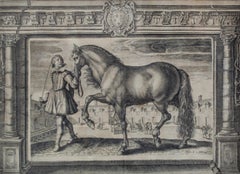Want more images or videos?
Request additional images or videos from the seller
1 of 10
Winslow HomerWinslow Homer "Snap The Whip" Harper's illustration, engraved by Lagarde1873
1873
$2,500List Price
About the Item
- Creator:Winslow Homer (1836 - 1910, American)
- Creation Year:1873
- Dimensions:Height: 20 in (50.8 cm)Width: 26.75 in (67.95 cm)Depth: 1.25 in (3.18 cm)
- Medium:
- Movement & Style:
- Period:
- Condition:Folds consistent with other editions, some discoloring lower right corner.
- Gallery Location:New York, NY
- Reference Number:1stDibs: LU2211214872912
Winslow Homer
Winslow Homer (1836-1910) was an American landscape painter, printmaker and publication illustrator. He is considered one of the most important American artists of the 19th-century. Largely self-taught Homer initially worked as an illustrator for various publications, including: Harper's Weekly, Frank Leslie's Illustrated Newspaper and Ballou's Pictorial Magazine. He worked for Harper's during the Civil War, producing woodcut engravings depicting the personal experiences of soldiers. He later became a master of oil and watercolor painting, often focussing on maritime themes. Harper’s Weekly, published in New York, was an extremely popular publication in the nineteenth and early twentieth centuries. In weekly issues Harper’s reported the news, entertained with literature, poetry and art, as well as educating its readers about world affairs and new inventions. It's woodcut engraved illustrations and literature added to its popularity, employing major artists and authors of the time, including Winslow Homer, Charles Dickens, William Makepeace Thackeray and Thomas Nast.
About the Seller
5.0
Platinum Seller
Premium sellers with a 4.7+ rating and 24-hour response times
1stDibs seller since 2022
93 sales on 1stDibs
Typical response time: 1 hour
Authenticity Guarantee
In the unlikely event there’s an issue with an item’s authenticity, contact us within 1 year for a full refund. DetailsMoney-Back Guarantee
If your item is not as described, is damaged in transit, or does not arrive, contact us within 7 days for a full refund. Details24-Hour Cancellation
You have a 24-hour grace period in which to reconsider your purchase, with no questions asked.Vetted Professional Sellers
Our world-class sellers must adhere to strict standards for service and quality, maintaining the integrity of our listings.Price-Match Guarantee
If you find that a seller listed the same item for a lower price elsewhere, we’ll match it.Trusted Global Delivery
Our best-in-class carrier network provides specialized shipping options worldwide, including custom delivery.You May Also Like
Becquet
By James Abbott McNeill Whistler
Located in Storrs, CT
J. Becquet, Sculptor (The Fiddler). 1859. Drypoint. Kennedy 52 state iv; Glasgow 62. state i. 10 1/8 x 7 1/2 (sheet 15 5/16 x 9 3/4). Series: "Sixteen Etchings or Scenes on the Thame...
Category
Mid-19th Century American Impressionist Figurative Prints
Materials
Drypoint, Etching
Original "He Is Risen" vintage poster for Mathers Work Incentive Program
Located in Spokane, WA
Original American work incentive poster: ‘HE IS RISEN”. Artist: Willared Frederick Elmes.
This isn't actually a war/propaganda poster per se, but it was produced by Mather & Co. Elmes was an artist similar to Mather in that they were both prolific with their morale + work incentive posters in the 1930s. Elmes also created other pieces done for the early railway posters.
The poster with the stained-glass panel in the back and the ray of light shining in is the last Mather & Company poster printed (1930). All others were printed in 1929 and earlier. The very last in the Work Incentive Mather’s posters...
Category
1930s American Impressionist Figurative Prints
Materials
Lithograph
$1,999 Sale Price
20% Off
H 44 in W 36.25 in D 0.05 in
Original "The American Red Cross is spending Ten Million" vintage poster
By Jean Louis Forain
Located in Spokane, WA
Original American Red Cross vintage poster. Linen backed and ready to frame.
The Red Cross nurse warming thousands, feeding thousands, hea...
Category
1910s American Impressionist Portrait Prints
Materials
Lithograph
$398 Sale Price
20% Off
H 27 in W 19.5 in D 0.05 in
Jewish Shtetl Couple Judaica Woodblock c.1930s WPA Woodcut Print Hand Signed
By Albert Abramovitz
Located in Surfside, FL
Some of his prints were published by the WPA. it is a wood engraving signed in pencil. From a small edition.
Albert Abramovitz (1879-1963), born in Riga, Latvia, on January 24, 187...
Category
1930s American Impressionist Figurative Prints
Materials
Woodcut
$1,100
H 9 in W 11 in D 0.1 in
"Eternal Problem" - 1924 Etching on Paper
Located in Soquel, CA
"Eternal Problem" - 1924 Etching on Paper
Etching on paper titled "Eternal Problem" by Elias M. Grossman (American, 1898-1947). A bearded rabbi is portrayed thinking with his hand p...
Category
1920s American Impressionist Figurative Prints
Materials
Paper, Ink, Etching
$520 Sale Price
20% Off
H 16 in W 19 in D 1 in
Young Girl by the Window, Mid-century Portrait
By Ben Messick
Located in Soquel, CA
Mid-century portrait of a young girl by a window by acclaimed California artist Ben Messick (American, 1891-1981). Signed "Ben Messick" in plate, and in pencil in the lower right corner, by the estate. Presented in an off-white mat. Unframed. Paper size: 12"H x 12"W
The following is submitted by Jim Lafferty whose sources include the autobiography of the artist:
William Washington Messick married Sarah A. Bristow January 2,1889 and from this marriage a son, Benjamin Newton Messick was born on January 9, 1891 on a farm near Strafford, Missouri. His art talent was apparent from the time he was a child and later recognized by his commanding officer in World War I. He completed his training in Los Angeles at Chouinard in the late-1920s and is well-known for his Regionalist scenes and Modernist paintings. He was an instructor at Chouinard through the 1950s & influenced a generation of LA Modernists.
Little is recorded in his autobiography about Messick's life from his teen years and service during the War. He enrolled at Chouinard Institute in the Fall of 1925, and was given a three-year scholarship by Mrs. Chouinard. In 1925 he won a cash award at the Los Angeles County Fair for a group of pen and charcoal drawings done in the parks and streets of Los Angeles. These works give the appearance of being spontaneous and fluid.
In 1930 Messick left Chouinard as a full-time student and rented an apartment on West Eighth Street to use as a studio and living quarters. He had his own ideas on what he was trying to accomplish in art. "If you should ask what is the message of my drawings, I should say that they may explain themselves or may be just a technical exercise."
By the mid 1940s, Messick's position in the art world had been well established as a teacher, painter, printmaker, writer and critic. Over his life time he had over 400 shows and exhibitions. Starting in 1939 he produced a number of stone lithographs that appear to the untrained eye as original drawings. To Messick the image was the most important aspect of his lithographs, and his signature in the plate was sufficient. Hand signing each lithograph did not seem necessary to him. He exhibited prints widely including the Albany Print Club and the Metropolitian Museum.
To further substantiate the authenticity of Messick's prints the Eclectic Gallery under the authority of the Messick family posthumously pencil signed each estate-acquired stone lithograph.
Messick had a childhood fascination with the circus and started drawing and painting the circus in 1935. His circus work, especially his clown studies, and his lithographs became his trademark work for in the 1940s and 1950s. A critic for ART REVIEW described his Big Top work this way: "His circus canvases...
Category
1940s American Impressionist Figurative Prints
Materials
Paper, Ink
$575 Sale Price
23% Off
H 20 in W 16 in D 0.25 in
Early 20th Century Miniature Etching, Portrait of an Old Woman by Ralph Sweet
Located in Soquel, CA
Early 20th Century Miniature Etching, Portrait of an Old Woman by Ralph Sweet
Compelling early 20th century small-scale figurative etching of an old...
Category
Early 20th Century American Impressionist Portrait Prints
Materials
Paper, Etching
$875
H 7.25 in W 5.5 in D 0.25 in
"Study 8" Figurative Lithograph
By Jim Smyth
Located in Soquel, CA
Lithograph of a figure of a woman by Jim Smyth (American, b. 1938). Numbered, titled, signed and dated "3/12", "Study 8", "Smyth 74” along the bottom edge. Unframed.
Jim Smyth has studied at the Academia de Belle Arti in Fiorenza, Italy, Ecole des BeauxArts in Geneva, New York Academy, and the Art Students League. He is also a graduate of UC Berkeley with a degree in Fine Art.
Although academically trained, Smyth practices and teaches a more impressionistic style of painting, focusing on the Alla Prima technique.
He is particularly knowledgeable about drawing, perspective, color theory and the human figure, his passion. Smyth, with extensive academic knowledge, has a profound love of all human representations as illustrated by his humorous quick sketches from life. He also practices and teaches oil painting and pastels.
When not in Provence, or Southeastern France, Smyth teaches intensely in art schools, art centers and several colleges in the Bay Area. He is a beloved instructor and his classes fill in quickly as he is very knowledgeable.
On his return to the United States, he began studying with Mr. Alanson Appleton at the College of San Mateo, San Mateo, California. Smyth was a founding member of the Appletree Etchers, Inc., an etching print shop organized by Mr. Appleton and his students to develop and promote color intaglio. Smyth served as Master Printer at the studio for many years perfecting the techniques of intaglio and developing the color theories of Mr. Appleton as applied to the deeply etched plate.
Smyth received his degree from the University of California, Berkeley, in 1972 and holds the California Community College Certificate and an Adult Education Certificate. Smyth was invited to teach "Anatomy for Artists" at Foothill College, Los Altos Hills, California, as a result of his many years of dissection of the cadaver and developed the course of study of Perspective for the college. During this period, he began teaching Life Drawing at the Pacific Art League of Palo Alto, Palo Alto, California. During the following thirty years Smyth has taught an average of twelve classes per week at the Pacific Art League of Palo Alto, the Palo Alto Art Center and the Burlingame Recreation Department among others in all phases of drawing and painting. He has conducted many workshops for the California Academy of Painters in many aspects of drawing and painting. Currently, he is an Adjunct Professor of Drawing at the College of San Mateo, San Mateo, California. He is an authority on the materials of painting and drawing, techniques of traditional drawing and painting, color theory, perspective and anatomy for artists. In his career in Life Drawing, Smyth has made over two hundred thousand drawings from the model.
In addition to studies at Berkeley, Smyth has studied at the College of San Mateo, Foothill College, De Anza College, Mission College, and West Valley College, all in California. One of the pivotal points in his career was studying with Mr. Maynard Dixon Stewart at the University of San Jose, California. He spent a year at the New York Academy of Art where he was offered a full scholarship and at the Art Students League of New York. He concurrently attended classes at the National Academy of Design in New York. Among others, Smyth studied with M. Andrejivec, Ted Schmidt, Elliot Goldfinger, Gary Fagin, Ted Jacobs, Leo Neufeld, David Leffel, Jack Ferragasso, Jim Childs and Everett Raymond Kinstler and Kim English. Smyth has also studied with the noted painter and colorist, Ovanes Berberian...
Category
1970s American Impressionist Figurative Prints
Materials
Paper, Etching
Female Figure Underwater Realist Etching --"Separation" by Carol Bennett
By Carol Bennett
Located in Soquel, CA
Female Figure Underwater Realist Etching --"Separation" by Carol Bennett
Unique etching of a female figure submersed beneath the surface of water by California and Hawaii artist Ca...
Category
1990s American Impressionist Figurative Prints
Materials
Etching, Laid Paper
$1,215
H 19 in W 24 in D 1 in
THE CRITIC
By Norman Rockwell
Located in Aventura, FL
Collotype in colors on paper. Unsigned. Title and copyright info in typeset lower margin.
Artwork is in excellent condition. All reasonable offers will be considered.
Category
1970s American Impressionist Portrait Prints
Materials
Paper
More From This Seller
View AllAegidius Sadeler II Engraving "Petronia, First Wife of Vitellius, Roman Emperor"
By Aegidius Sadeler II
Located in New York, NY
Artist: Aegidius Sadeler II
Petronia, First Wife of Vitellius, from set of Roman Emperors and Empresses, c. 16th-17th century
Engraving
Publisher: Marcus Christoph Sadeler
Sight: 15 1/4 x 10 3/4 in.
Framed: 19 3/4 x 15 1/4 x 1 in.
This image was conceived in the 16th century by Aegidius Sadeler II and published by Marcus Christoph Sadeler. It is unclear when the present version was executed.
Aegidius Sadeler or Aegidius Sadeler II[1] (1570–1629) was a Flemish engraver who was principally active at the Prague court of Rudolf II, Holy Roman Emperor and his successors. Sadeler was born in Antwerp in the Sadeler family of print dealers and engravers. He was the son of Emmanuel de Sayeleer and the nephew of Aegidius I, Jan I en Raphael Sadeler.[2] He was trained by his uncle Jan I and became a member of the Antwerp Guild of St. Luke in 1589. He was active in Munich the next year in 1590, in Rome in 1593, in Naples and then again in Munich in 1594–1597. From 1597 he settled in Prague where he became court engraver for Rudolf II and made engraved portraits of notables and engravings after artworks there, most notably paintings by Bartholomeus Spranger, Roelant Savery, Hans von Aachen, Giuseppe Arcimboldo, and sculptures by Giambologna and Adriaen de Vries.
His early engravings were mostly faithful copies of works by Albrecht Dürer in the Imperial collection and copies of paintings by notable Italian painters such as Raphael, Tintoretto, Parmigianino, Barocci and Titian or by Northern painters who worked there, such as Paul Bril and Denys Calvaert. In Prague he also engraved portraits of the notables of Rudolf's court, and collaborated with Spranger, Joseph Heintz the Elder, Jacobus Typotius and his friend Anselmus Boece de Boodt (1550-1632), Rudolf II's gemologist and physician.[3]
After Rudolf II died he enjoyed the favour and protection of the two succeeding Emperors, Matthias and Ferdinand II.[4][5] According to Michael Bryan...
Category
16th Century Old Masters Portrait Prints
Materials
Engraving
Old Master French Noblemen Engraving by Crispin de Passe
By Crispin De Passe
Located in New York, NY
Crispin van de Passe The Younger (c. 1594-1670)
Untitled (French Noblemen on Horseback), c. 1620-1660
Engraving
Sight: 11 3/4 x 15 3/4 in.
Framed: 18 3/4 x 22 5/8 in.
Inscribed in p...
Category
17th Century Old Masters Portrait Prints
Materials
Engraving
Crispin de Passe Engraving of the Grand Écuyer (Squire) of France
By Crispin De Passe
Located in New York, NY
Crispin van de Passe The Younger (c. 1594-1670)
Grand Écuyer de France or Grand Squire of France, c. 1620-1660
Engraving
Sight: 11 3/4 x 15 3/4 in.
Framed: 18 3/4 x 22 5/8 in.
Crisp...
Category
17th Century Old Masters Portrait Prints
Materials
Engraving
Old Master Royal Stallion Engraving by Crispin de Passe
By Crispin De Passe
Located in New York, NY
Crispin van de Passe The Younger (c. 1594-1670)
Untitled (Royal Stallion), c. 1620-1660
Engraving
Sight: 11 3/4 x 15 3/4 in.
Framed: 18 3/4 x 22 5/8 in.
Inscribed in plate: Le Bonit...
Category
17th Century Old Masters Portrait Prints
Materials
Engraving
Carlo Carrà 1916 Futurist Lithograph
By Carlo Carrà
Located in New York, NY
Carlo Carrà (Italian, 1881-1966)
Untitled, 1916
Lithograph
Sight: 15 3/4 x 11 1/4 in.
Framed: 23 1/2 x 18 1/2 x 1 in.
Edition 14/60
Numbered lower left, signed and dated lower right
...
Category
1910s Futurist Figurative Prints
Materials
Paper, Ink
Norman Rockwell "Family Tree" Lithograph
By Norman Rockwell
Located in New York, NY
Norman Rockwell (American, 1894-1978)
Family Tree
Original painting produced 1959, this print published 1959 in Japan by The Curtis Publishing Company
Lithograph
Sight: 19 1/4 x 13 3...
Category
1920s American Modern Figurative Prints
Materials
Lithograph
Recently Viewed
View AllMore Ways To Browse
Antique Harps
Antique Whip
Tsukioka Kogyo
Utagawa Hiroshige On Sale
Utagawa Yoshitora
Vanity Fair Spy Lithographs
Victor Spahn
Vintage Lithographed Chinese Cigarette Poster
Vintage Mermaid Poster
Vintage Winnie The Pooh Prints
Vivian Springford
Warhol Dollar Signs
Warhol Trial Proof
1970s Printed Mirror
Al Pounders
Alberto Giacometti On Sale
Allison Lefcort On Sale
American Psycho
